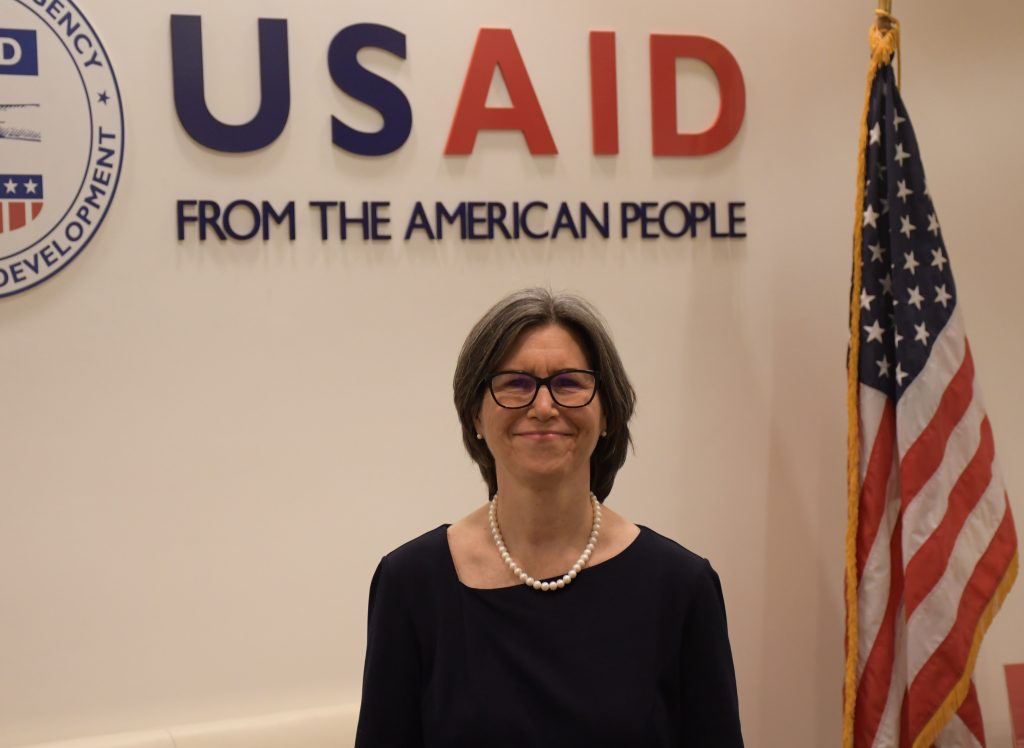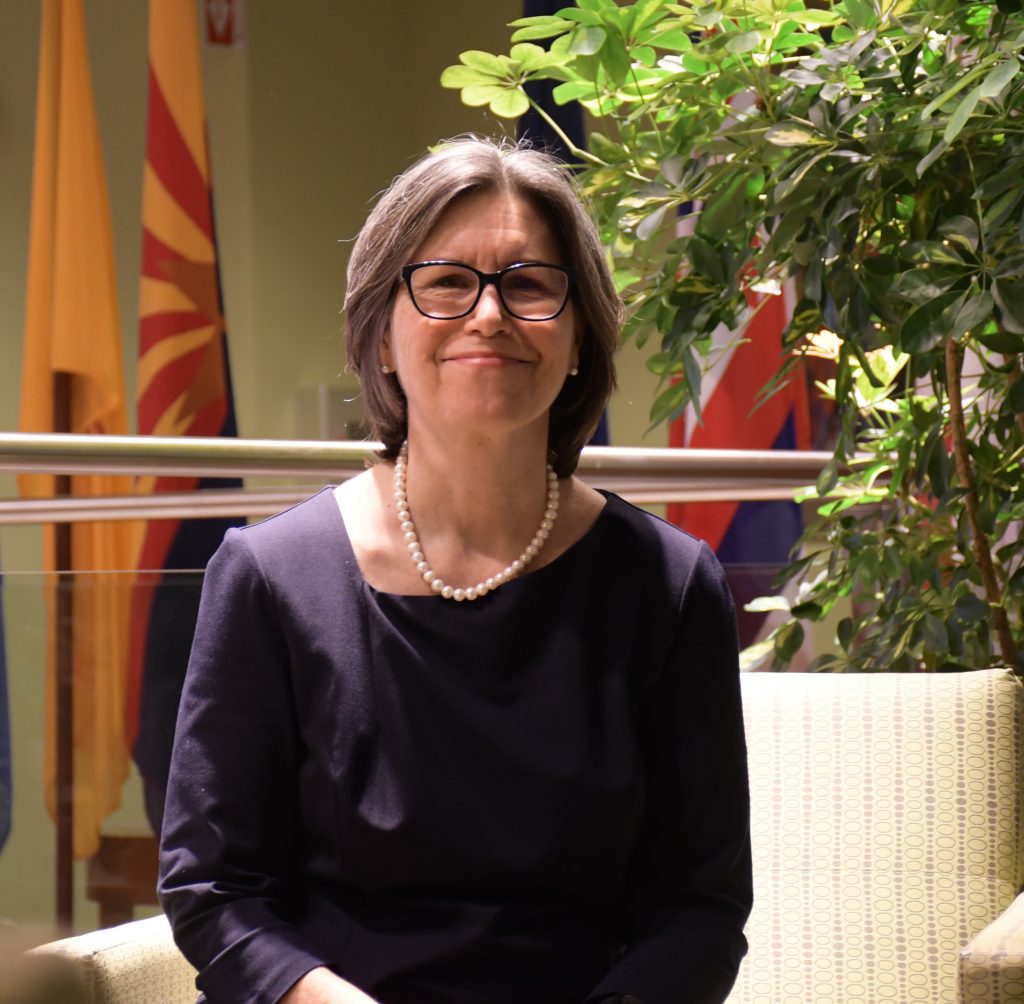USAID’s strategic goal for the next five years is to build on the achievements of our 20 years of partnership to support Serbia’s efforts to create more and better paying jobs and to build highly functioning government institutions that provide citizens with the services they need
For 20 years USAID invested more than 882 million dollars in Serbia. USAID is proud to have helped the realization of growth. Progress of the private sector has been the most impressive, said Susan Fritz for Diplomacy and Commerce magazine.

USAID is marking 20 years of its partnership with Serbia. What were the major challenges during these two decades of partnership?
Good partnerships depend on trust. It is easy to forget, as we now work in such close partnership with the Government of Serbia, Civil Society Organizations (CSOs), independent media and the private sector, that when we opened our offices in Serbia in 2001 there was a real hesitancy on the side of many of those actors to work with a U.S Government agency.
Given that hesitancy, our first task was to establish trust. We did this by launching a massive $200 million project called Community Revitalization through Democratic Action, commonly referred to as CRDA, that was all about establishing productive partnerships. Our project staff engaged with local communities all over the country to address the challenges that communities had identified as the most pressing. Over six years, that project completed approximately 5,000 different activities, ranging from building schools, health centers and even bridges to helping small businesses to grow and create jobs. Because citizens themselves decided on their priority activities and partnered with us to get them done — contributing labor, equipment, and materials — they saw that we could trust each other and that we could accomplish positive things for their communities by working together.
The more joint successes we had, the more that trust grew. I think at this point there are no challenges that we can’t overcome together through our close partnership.
USAID invested more than 882 million dollars over the last 20 years in support of the country’s economic and democratic development. In which areas do you think Serbia made the most progress?
If we look at what has changed over the last two decades, I would say that the growth of the private sector has been the most impressive. The economic transition from a planned economy to a market economy had already started in 2001, but there were just so many obstacles for aspiring entrepreneurs and investors on every level.
“Serbia would have already become a full member of the European Union”
To help address this, USAID sought like-minded counterparts wherever we could find them. At the local level, we identified small entrepreneurs who clearly had good ideas and were willing to work hard to accomplish them. We then looked for local governments that understood the need to make their cities or municipalities more business friendly and were willing to put in the work to make that happen and to start attracting more investments. Finally, we started working with the Government of Serbia institutions to help them to improve the overall business enabling environment.
To be clear, these accomplishments are all Serbia’s, but USAID is proud to have helped contribute to their realization. One of our key legacies is the National Alliance for Local Economic Development (NALED) which we helped establish to bring together all key stakeholders in the economy to keep driving the reforms necessary to unleash Serbia’s economic potential. NALED has grown in importance and stature over the years to the point where the current Minister of Finance often jokes that NALED is not easy to work with but that it’s definitely worth it — as they have accomplished a lot together.
USAID has implemented thousands of activities to improve living standards, create new jobs and support Belgrade’s efforts to join the European Union. Where is Serbia right now on the EU path?
I think we were all hoping that by now, Serbia would have already become a full member of the European Union. Our work at USAID has always been designed to support Serbia’s integration into Europe. Our reasoning behind supporting Serbia’s EU integration efforts was and continues to be, two-fold. First, we firmly believe that the best possible future for Serbia’s people lies in the country joining the EU. We also believe that implementing the reforms that are required to move further along the path to getting there, will bring about tangible improvements in peoples’ lives.
Next year we will have elections in Serbia. What should be the priorities on the agenda of the new Serbian Government?
It is not for me to tell the Serbian government what their priorities should be. Like all governments, they need to listen to what their citizens tell them are their concerns and work to find solutions. When you look at opinion polls, you can see that people consistently are concerned about the economy and jobs, while recent polls show that people have listed healthcare as a priority. Considering we’re still in the grips of the COVID-19 pandemic, this is not surprising. People are also increasingly concerned about environmental protection and pollution.
What should be done to help Serbia’s economy become more competitive?
It has been clear for several years that developing Serbia’s digital economy ecosystem and helping companies to adapt would be necessary for ensuring the country’s medium- and long-term competitiveness. COVID-19 and its impact on all of our lives — on how we shop, on how we do business and on how we communicate with each other and get our information — further accelerated the need to find digital solutions on all levels. Fortunately, the efforts of the Prime Minister’s office, USAID, and the country’s tech-savvy entrepreneurs prior to the pandemic meant that Serbia was not caught flat-footed.
I think there is widespread recognition that, in addition to businesses needing to pivot to adapt to the new reality, schools need to adjust to equip youth who will enter the workforce with the tools they need to succeed. At the same time, companies and continuing education institutions need to help those already in the workforce to modernize their skillsets.
“It has been clear for several years that developing Serbia’s digital economy ecosystem and helping companies to adapt would be necessary for ensuring the country’s medium- and long-term competitiveness”
This year, USAID launched a partnership with ICT Hub called “Serbia Innovates” that is working to strengthen the innovation-driven Serbian economy and to bolster its further development, competitiveness, and export potential. We’re also supporting the Prime Minister’s Digital Expedition Caravan initiative to help people around Serbia to learn more about how to connect with government institutions online and to improve their digital skills and online privacy awareness. We will continue helping Serbia in its digital transformation.
Serbia and the United States are marking 140 years of diplomatic relations this year. In which areas do you see positive change in our relations?
For the vast majority of those 140 years, the United States and Serbia have been close allies. Now, with the 1990s well behind us, we’re again working together on common goals. I think our recent cooperation on COVID-19 is a great example. Primarily through USAID, but also through other parts of the U.S. Government, the United States helped Serbia with approximately $9.1 million in COVID-19 assistance on top of our already planned development assistance. Serbia also helped the United States by providing flights to get Americans safely home at the beginning of the pandemic. That is just one example, but it shows how our two countries are working in close partnership. For our 20th anniversary, we chose “20 Years of Partnership. Creating together…” as our central theme, because everything USAID has done in Serbia, we have done in partnership with our Serbian friends.
What can be the advantages of Serbia in the coming years?
Having served in Serbia previously and recently coming back to work, here again, I am constantly reminded of how resilient and creative the country’s entrepreneurs can be. The work USAID does to help Serbia’s companies improve their competitiveness has allowed me to meet so many incredibly smart and motivated business people, ranging from those designing apps and video games to those who are working to get Serbia’s delicious foods onto dinner tables around the world. If Serbia stays committed to driving the reforms that bring the country closer to European Union membership and keeps working to improve its business enabling environment, these entrepreneurs can, and will, create better paying jobs here in Serbia.

Fortunately, Serbia’s schools help create smart young people. In order to reverse the brain drain, those young people need to be convinced that they can have a brighter future here in Serbia. At the same time, the people who have already left Serbia need to be convinced that they can take what they’ve learned elsewhere and bring it back to Serbia and have a level playing field on which they can succeed. If Serbia can keep its best and brightest, it can attract more international and domestic investments and move beyond being a regional economic leader to becoming a global economic powerhouse.
Further plans and activities of USAID in Serbia
USAID’s strategic goal for the next five years is to build on the achievements of our 20 years of partnership to support Serbia’s efforts to create more and better paying jobs and to build highly functioning government institutions that provide citizens with the services they need. We will further increase our partnerships with the private sector, Serbian government, and civil society to assist democratic reforms, accelerate inclusive economic growth, and mobilize public and private resources for Serbia’s development goals.
As we did during the past two decades, we will continue working with our counterparts at all levels to address the issues that the people of Serbia have identified as obstacles to democratic and economic growth and for creating a better future for their children. We will continue creating together.